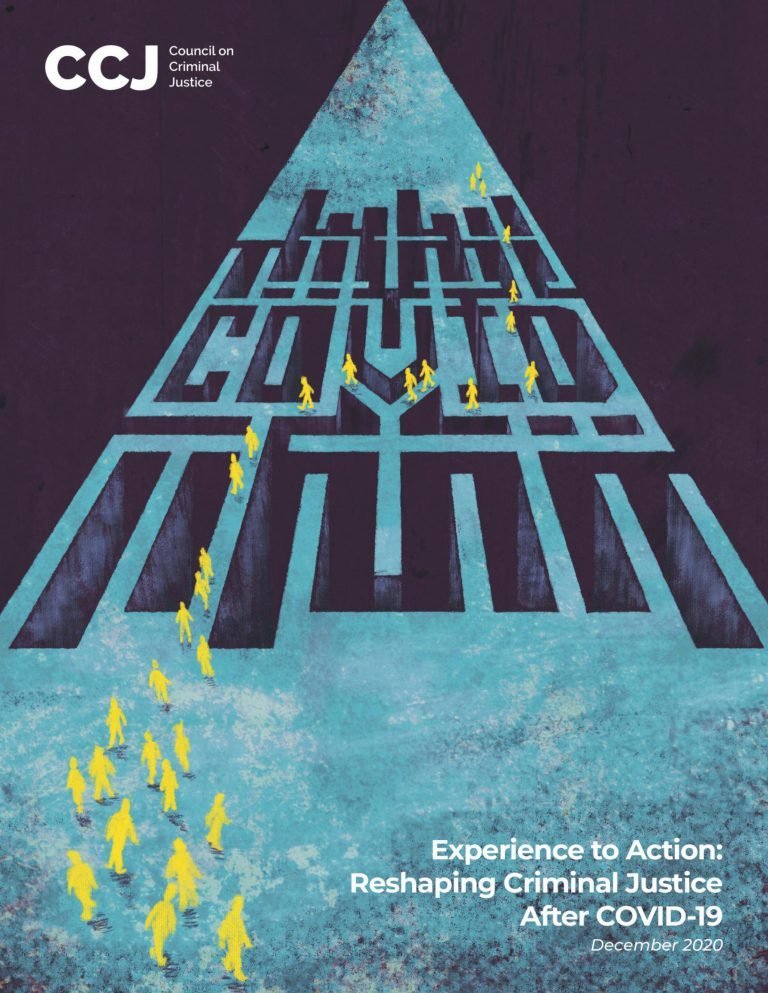By National Commission on COVID-19 and Criminal Justice.
This report provides criminal justice policymakers and practitioners with a priority agenda to prepare the nation’s criminal justice system for future public health crises. Through its recommendations, the Commission seeks to better balance the roles and responsibilities of the public health and public safety fields. Through its recommendations, the Commission seeks to better balance the roles and responsibilities of the public health and public safety fields. Launched at the end of July, the Commission received multiple reports and extensive testimony from leading national and local experts. Key findings include: + Crime: Property crime and drug offense rates fell from 2019 to 2020, but violent crime increased significantly. In particular, homicide rates increased by 42% during the summer months (June to August) in a sample of more than 20 medium to large cities, and by 34% in the fall (September to October).1 + Prisons: Prison populations have been reduced by about 5% nationally. On average, the COVID-19 mortality rate within prisons (61.8 deaths per 100,000 people in prison) was double the mortality rate for the general population, after adjusting for the gender, age, and race/ethnicity of those incarcerated. There are also substantial differences among states in the rate of prison infections and deaths.2 + Jails: Jail populations fell by 31% in the early weeks of the pandemic but have been slowly climbing toward prior levels since May.3 During the pandemic, the rates at which people have been rebooked on new charges 30, 60, and 180 days after release remain below pre-pandemic rates. Unfortunately, data regarding COVID-related infections and deaths in jails is scarce. + Racial and Ethnic Disparities: The COVID-19 pandemic may have exacerbated some racial and ethnic disparities in the criminal justice system. As jail populations began to fall in March at the onset of the pandemic, there were increases in the proportion of people who were Black, who were booked on felony charges, who were male, and who were 25 or younger. These changes in the population composition persisted even as jail populations began to rise again in early May.4 + Substance Use and Mental Health Disorders: More than 40 states have reported increases in opioid-related fatalities since the onset of the pandemic. Mandatory lockdowns, restrictions on movement, social distancing guidelines, orders limiting access to facilities for nonessential workers, and the absence of in-person treatment have created gaps in the system's ability to identify and monitor the needs and legal 3 requirements of people with substance abuse and mental health disorders, and to intervene when they are in distress.5 + Budgets: State and local governments face daunting budget deficits that will worsen as the pandemic wears on, and unemployment levels remain high. Because criminal justice operations (law enforcement, courts, and corrections) are funded more heavily by state and local governments than most other government functions, revenue shortfalls will disproportionately damage the criminal justice system without effective policy interventions.
Washington, DC: Council on Criminal Justice. 2020, 43pg


